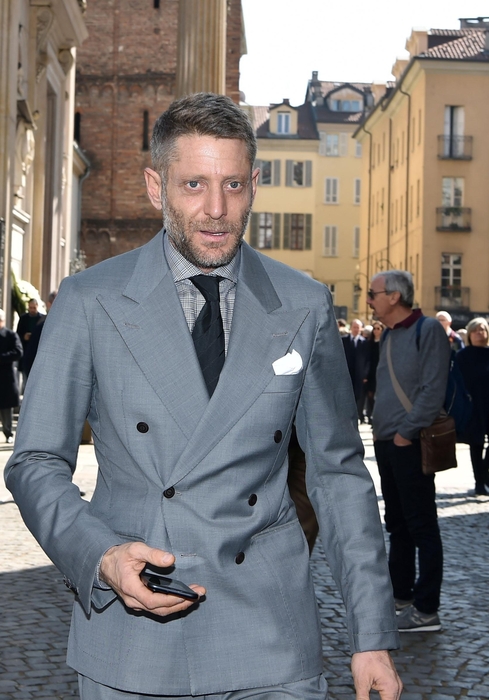"The houses of Marella Agnelli (1927-2019) had everything that money can give you and yet they were not the typical representation of the house of the powerful. But I know that as Marella Agnelli there are very few," Lorenzo Castillo said in his interview with ICON Design, while lamenting one of the big mistakes in decoration: "The use of power icons to show who you are and where you are."
Today marks a year of the death of this aristocrat, art collector and icon of Italian style, which The New York Times recalled in his obituary as "the last swan of high society", one of the original swans of Truman Capote. She was married to the president of the Fiat car brand, Gianni Agnelli , and her empire extended into several properties - mainly a villa in Turin and an apartment in Rome in front of St. Peter's Basilica - full of design jewels, works by art that is now preserved in the Agnelli collection , spectacular gardens and unique pieces of furniture. With a common feature: that carefree elegance that sprouts as natural and sovereign as the bulbs in spring, and that was debated between the museum and the everyday without stridency. We pay a visit to the interiors of Marella Agnelli.
1. A Roman 'loft'
Although the most luxurious house of the Agnelli was the family mansion in Turin, in its Roman apartment Marella Agnelli put into practice a more current style and adapted to the times. For this he collaborated with the interior designer Ward Bennett, who in 1970 applied a very innovative concept: an open and diaphanous space, with high arched windows that overlooked the gardens of the Palazzo Colonna and the basilica of San Pedro, furnished with pieces of rattan, works of contemporary art and antiques.
2. Mediterranean Vanguard
In this image you can see in more detail the innovative design of Bennett, in the line of the claim of the Mediterranean architecture of the sixties and seventies: rattan furniture, customary in terraces and viewpoints, becomes here interior pieces , like the lemon tree, which is not in a garden, but decorating the living room.
In an era dominated by eye-catching prints, choosing white and raw fabrics to upholster furniture - attention to the capitone chair! - is an avant-garde gesture that refers even to the linen fabrics of Axel Vervoordt. And at the bottom the stairs allow us to understand how Bennett conceived the space, with a mezzanine suspended at the back of the room. Abstract art works follow the same color scheme.
3. Purified nostalgia
On one occasion Marella Agnelli told her daughter - who in turn recalled it in Architectural Digest in 2014 - that, the first time she visited the family home of her husband's family in Turin, she was impressed by her sumptuous 19th-century interiors . "It was like being in a loop in time. It was an old family home full of charm and nostalgia."
That's why, when she got married and moved there, she and decorator Stephane Boudin decided to keep many of the original items, such as this bookcase of noble woods with carefully bound books. It is not that they belonged to the same collection, but to a custom that many bibliophiles still maintain: order bookbinding so that their books fulfill, in addition to the intellectual, a decorative function. A whim worthy of Dorian Gray.
4. Mix and do not shake
The mix of styles is this: on a modern table with glass top, seventeenth-century silver cutlery and daisies. The chairs are a folding design in steel and leather created by the Italian architect Gae Aulenti, who collaborated with Marella Agnelli in the garden of her Turin villa, devising a swimming pool and a Japanese-inspired bath pavilion.
5. Rococo upholstery
One of the jewels of Villa Agnelli in Turin is its noble floor, with 18th-century wall paintings. Marella and the decorator Boudin restored them, as in this Salon Dipinto ("painted room"). It highlights the upholsteries of sofas and couches, which represent Marella Agnelli's taste for sumptuous textures - here, silk and Italian taffeta - in soft and pastel colors that refer to Rococo taste. Special mention for the play of colors of the cushions of the great sofa in the background, which decompose the green of the upholstery in yellows and blues.
6. The strata of its history in a garden
The garden of Villa Agnelli is the origin of the family's fortune, because in it an ancestor of Gianni Agnelli planted mulberry trees to raise silkworms that were the foundations of a textile business whose numerous benefits served the family to found in 1899 Fabbrica Italiana di Automobili Torino (that is, the Fiat that Agnelli presided). Marella Agnelli entrusted it to the English landscaper Russell Page, who created these azaleas flower beds and encapsulated the family's history while conserving the cultivated areas for each generation.
7. Decorative intelligence
In the library of the Roman apartment of Marella Agnelli, Ward Bennett devised a decoration in white and gold with works of art such as a nude of Modigliani and a sculpture of Plexiglas - in the foreground, on the sideboard - of the American sculptor Louise Nevelson. Attention to the game of transparencies generated by glass and glass furniture, which make the light reflect and the room seem wider despite being crowded. An exercise of pure decorative wisdom of the sixties that was no stranger to other gurus of the time: during those years, Karl Lagerfeld lived in a house decorated exclusively in white and chrome finishes.
8. Vegetation enters the bathroom
The bathroom of the Roman apartment is presided over by the panoramic views of the Quirinale and by the play of the windows, in which the vegetation inside seems to merge with the trees outside. The marble bathtub is a piece designed by Ward Bennett himself. The wall facing the back window is all mirrored with metal profiles, and visually duplicates the surface of the room. Imagine it at sunset.
9. Worldliness in a dining room
Three of the dining room walls of the Roman apartment are occupied by a gigantic mural painted by Mario Schifano, an artist who, in his Wikipedia profile, is described as "lover of worldliness." In this case, that mundane character found a first level interlocutor in Marella Agnelli. Here again there are games of contrasts: the furniture is very modern, but the travertine marble floor is covered by a carpet dating from the seventeenth century.







/cloudfront-eu-central-1.images.arcpublishing.com/prisa/2C5HI6YHNFHDLJSBNWHOIAS2AE.jpeg)




